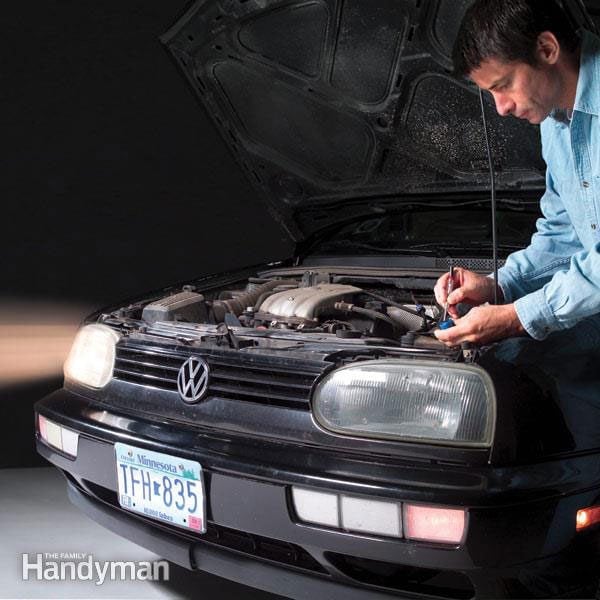
Fixing a Broken Auto Light Socket: Step-By-Step Instructions
When a headlight goes out, the problem is usually a bad bulb, which is easily replaced. However, the problem could also be a corroded auto light socket or a bad wire. Keep in mind that when several lights are out, such as both headlamps or both taillights, the problem is most likely a fuse. If the fuse is bad, you can replace it and most likely be on your way.
In this article, we’ll show you how to replace the bulb, and if that fails, we’ll show you how to diagnose a bad auto light socket and probe the wiring with a simple 12-volt automotive test light. (Here are 20 more tools no home mechanic should be without.)
Tools and materials required for this do-it-yourself project:
* Headlamp bulb
* Electrical contact cleaner
* 12-volt auto test light
* Small screwdriver or wire brush for scraping corrosion
* Torx tip screwdriver (possibly)
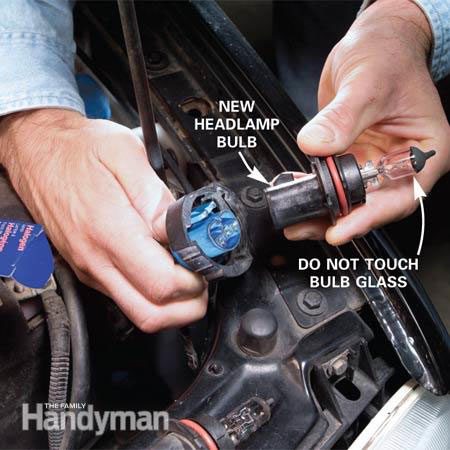
Step 1: Replace the Bulb
Start with the Obvious Suspect
Many new car bulbs are easily accessed from under the hood by turning a retaining ring and pulling the bulb socket out; but if you have to access the bulb by removing a lens (see your owner’s manual), you may need to buy a “torx” tip screwdriver. Remove the old bulb and insert the new bulb. Don’t touch the glass of the bulb with your bare hands because the oils on your skin can cause the bulb to fail. Reinsert the socket into the headlamp housing and turn on your lights. If they work, you’re done; if they don’t, go on to the next step.
Could your headlights simply use a deep cleaning? Here’s advice on how to clean cloudy headlights.
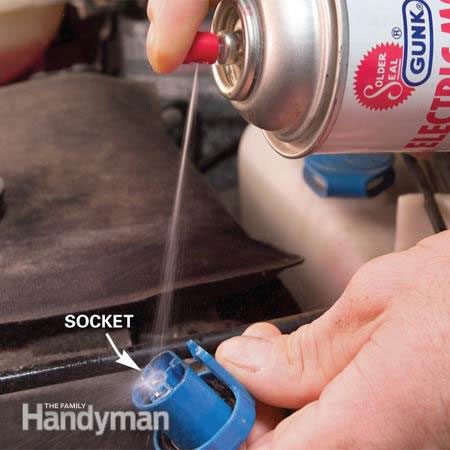
Step 2: Clean the Auto Light Socket
Be Suspicious of Corrosion
Turn off the light switch and remove the bulb again. Clean the socket with electrical contact cleaner, which is available at auto parts stores. If you see heavy corrosion, scrape it off with a small screwdriver or wire brush. Then move on to the next step.
Got corrosion elsewhere? Find out how to replace corroded battery terminals.
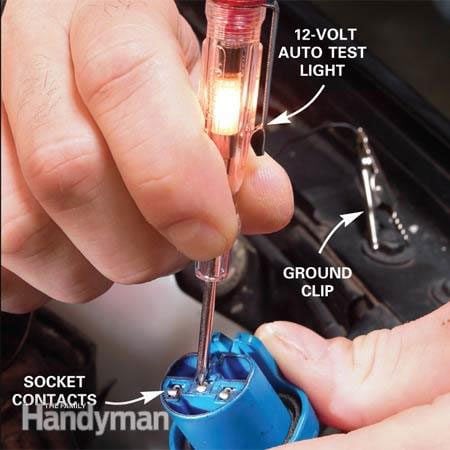
Step 3: Test the Auto Light Socket
Check All Contacts
Test for power at the socket. Turn on the light switch, then ground the tester to a clean screw on the body of the car. Probe the contacts to see if the tester lights. If the contacts look corroded, scratch the surface, but be careful not to bend or distort them. The tester should light for two out of three contacts (one won’t because it’s a ground). If two of them light, insert the bulb. If the bulb still doesn’t work, replace the socket. If only one or no contact shows power, go to step four.
Here are 15 more car problems you can diagnose and fix yourself.
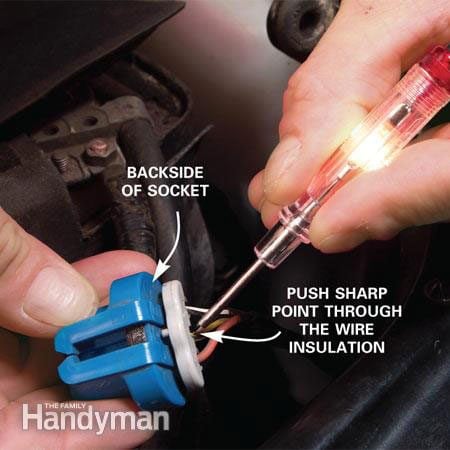
Step 4: Test for Power at the Wires
The Socket May Have Gone Bad
Push the point of the tester through the wire insulation behind the socket to make contact with the wire. The tester should light for two of the three wires (the ground wire won’t light). If it lights for two wires, the wiring is good. Simply replace the socket. If not, you may have a bad wire or connector somewhere, so check for any visible problems. You may have a problem you can’t find. In that case, make an appointment with your mechanic to check it out.
Tip: Make sure your test light works before doing any diagnostics. Connect it to the negative battery terminal (or any good body ground) and touch the probe end to the positive-side battery terminal. The test light should light up.
Next, find out 100 more car repair tasks you can do on your own.